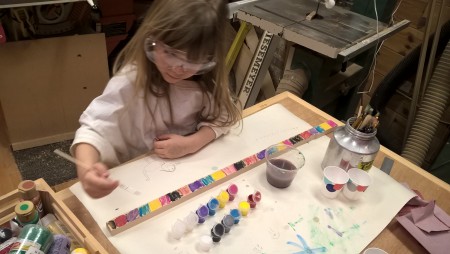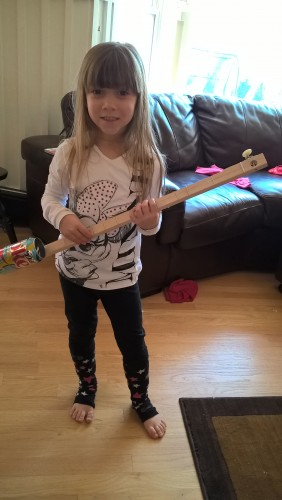- Canjos and Dulcimers and Bears – Oh My!
- Back to Basics
- String it up!
- Starting the Kimball Dulcimer
- Glue Up and Carving the Scroll
- Finishing “Coco Bear” the Appalacian Dulcimer
This most recent Spring Break week, we decided to take our “new” popup camper out for our maiden voyage on a week-long trip to the Great Smoky Mountains of Tennessee.

A tiny sample of the dozens of carved bear art pieces found in stores dotting the highways in the region
The original motivator, besides finding a relatively warm place to camp in March, was to ride one of the alpine coasters running in the Pigeon Forge/Gatlinburg area.
The coaster was great fun, as was the amazing Tuckaleechee caverns tour. For me however, the highlight of the trip was visiting the Wood-n-Strings Dulcimer Shop in Townsend, TN.
A day earlier we’d wandered into the Sunshine Mountain dulcimer shop in downtown Gatlinburg. There, during an interesting conversation with the luthier, we were introduced to the “Canjo.” This is basically a toy instrument – a single-stringed stick with an aluminum soda can for a resonator at one end.
Fretted like a dulcimer, you can play simple melodies on it, as demonstrated by the maker. I decided to pick one up to use as a template for building our own. The kids loved it and it immediately became the hit of the campsite. The kids decided they wanted to build their own canjos after we got home.
Building the Canjos
Canjos are trivially easy to make. They consist of a single stick of wood roughly 1-1/4″ wide by 3/4″ thick with the length determined by the chosen scale length. They are fretted similar to a guitar, however canjos, like dulcimers, use a diatonic scale (think white keys on the piano in key of “C”) instead of a guitar’s chromatic arrangement.
Because I already have a guitar fret template with 25″ and 25.5″ scales, I chose to use a 25″ scale length. I actually had plenty of scraps around of varying species that fit the bill. The kids each chose their own stick which I cut to length. After marking for the frets, I had each of them hand saw the fret slots and then glue/pound them in.
The purchased canjo uses a phillips head screw for the nut. I figured I might as well make a more traditional guitar style nut for these. Upon hearing last year that Corian makes decent nut material, I’d purchased a couple sample blocks online (failing to procure any from local stores). The blocks cut quite nicely and sanded easily. I’m sure the dust will do you no good, so be sure to have decent collection if you’re working with the stuff!
Though we had plenty of soda cans in the house, my 7-year-old son insisted on using a “Monster” energy drink can for his. Rather than staple the cans in place like the original, my daughter suggested using hot glue. This was quick and easy and seems rather solid.
A couple layers of Tung oil and we were ready to string ’em up and enjoy the music!
Next up: our first mountain dulcimer!











